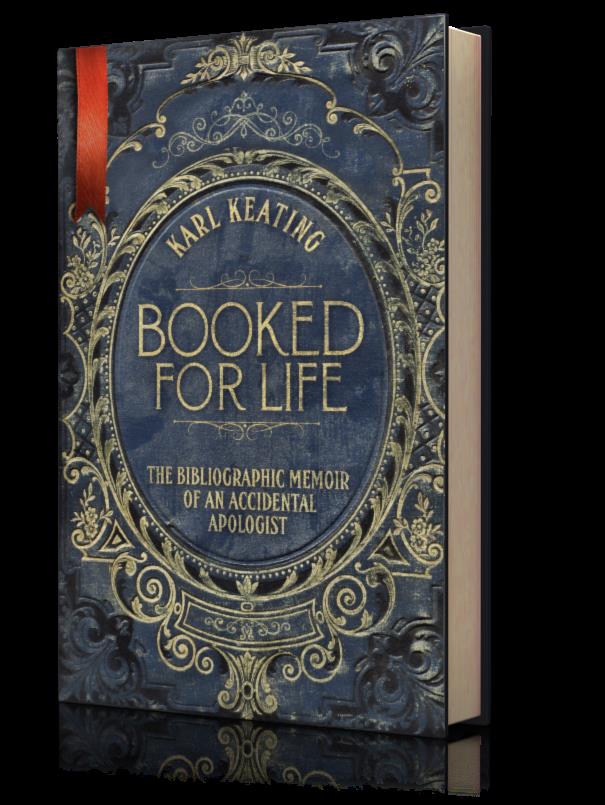God Works In Mysterious Ways - The Story Behind A Catholic Apologetics Classic
Over the last 29 years, so many lives have been touched by Karl Keating's book, Catholicism and Fundamentalism. It has been referred to again and again by converts as being instrumental in their conversion. It is very simply, a classic.
But how did Karl come to write Catholicism and Fundamentalism? The story might interest you.
Here's the story, in Karl's own words...
My first substantial foray into apologetical writing was in the pages of The Wanderer, a Catholic weekly newspaper. After having dabbled in apologetics on a small scale for several years, I proposed to the editor a short series on the Fundamentalist challenge to the Church. I guessed that three weekly installments of about 3,000 words apiece would be enough to cover the subject adequately. Always in need of copy, The Wanderer happily agreed to my proposal.
By the time I completed the first installment, I realized that I had underestimated the task. Would the editor consent to my expanding the series to five installments? Certainly, he replied. We can make accommodations. By the time I had written two or three more weekly pieces I saw that I still had far to go. The more I researched, the more I found worth writing about. I had begun with a list of anti-Catholic charges and anti-Catholic writers, and as I covered them I learned of still more charges and writers. It seemed that I would require eight installments rather than just five.
So it went, week after laborious week. As soon as I sent off one installment, I began research for the next. After research came writing. After writing came editing. After editing came the dissatisfaction of another looming weekly deadline. The more I wrote, the more needed to be written. The horizon moved ever further from me. I caught up to it less because I ran out of things to say than because I was on the verge of exhaustion.
The three-part series ended up having thirty parts. They were the first drafts (and, in most cases, the final drafts, since I had edited them carefully) of the chapters of what turned out to be my first book, Catholicism and Fundamentalism. I wonder now whether I would have ventured on the project had I known the toll it would take, having to meet weekly deadlines while otherwise working at a job full time. Though I wrote out of my home, I suppose my wife often felt like a widow.
When I was composing those thirty installments that ended up being Catholicism and Fundamentalism, I knew that I would have to frame my arguments in terms that opponents of the Church would accept, even if they never ended up accepting my conclusions. I knew I could not appeal to the authority of popes or councils, because Fundamentalists did not recognize their authority. I realized that they accepted the authority of Scripture, so my series ended up discussing more than 300 passages from the Bible, but I also realized that, at least to some extent, they accepted two other “authorities”: history and common sense. I made much use of each of these as I argued the Catholic position.
This is not to say that I expected that my Fundamentalist readers—or my Catholic readers, for that matter—would have much background in Christian history. In fact, I presumed they did not and that, for Fundamentalists, Christian history existed for only a few decades in the first century and then, mysteriously, disappeared for another fourteen centuries, to reappear only when the 95 Theses were posted on the church door in Wittenberg. Between the death of John and the rise of Luther there was a historical black hole. It was my goal to show otherwise.
I counted on the fact that most people like history, once they are introduced to it, and that most people know at least some secular history. Nearly everyone likes stories. Christian history is the story of the Church: its trials, its growth, its heroes, its villains. Unlike the “history” in fiction, real history is true—or at least attempts to be an approximation of the truth. Caesar was assassinated in 44 B.C. The Turks were defeated at Vienna in 1683. Napoleon lost at Waterloo in 1815. These things happened, and they had consequences. So with Church history.
That history can be examined through various lenses. There is the history of the papacy, the history of Christian political entities, the history of dogmas. The categories are many, and, for me, the last often has seemed the most useful because it deals with Christians’ attempts to work out the intellectual component of their faith. That working out continues in our own time, but I constantly have been drawn back to the earliest years of the Church, those covered by Joseph Tixeront and Johannes Quasten, since they remain the basis of all that followed.
If you enjoyed this excerpt, and want to find out more, order your copy of Booked For Life today! Enter Promo Code WINTER at checkout to save 30%
Recent Posts
-
God Creates Out of Love
God creates, we believe, ex caritate—out of love. If we recall our image of Christianity as a refle …Dec 16th 2025 -
If We Just Love Jesus, Does It Really Matter Which Church We Go To?
When I was considering joining the Catholic Church, I sat down with some of my non-Catholic friends …Dec 12th 2025 -
How Can I Prepare Myself to Receive Holy Communion at Mass More Fruitfully?
Preparation for the celebration of the holy Mass and reception of Holy Communion is an essential el …Dec 8th 2025










